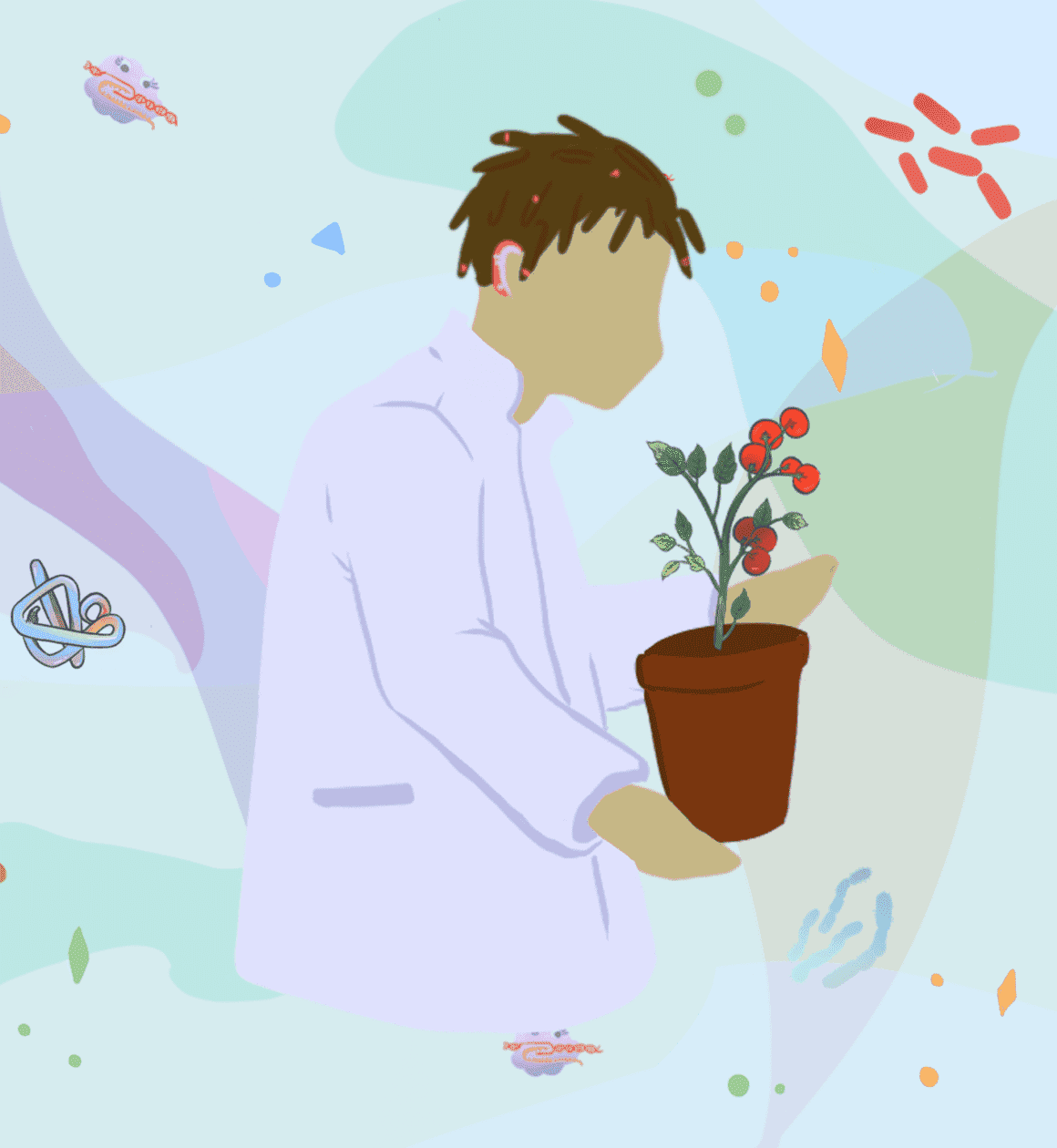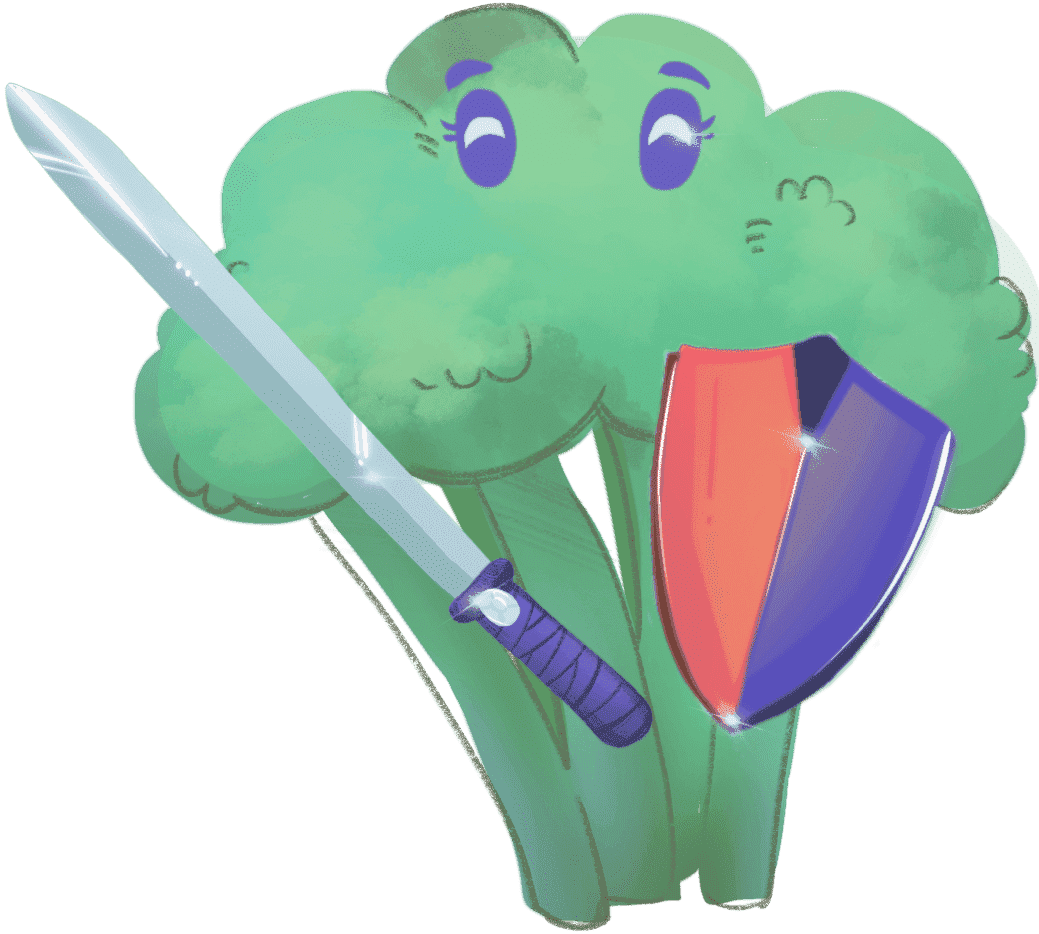CRISPR, Farming & Food
In this section of CRISPR Made Simple, learn how CRISPR is being used to help feed the planet.
Key Takeaways
Farmers have traditionally used selective breeding to make the crops and farm animals they want, but CRISPR can add and take away traits faster and more accurately to help feed a growing, changing world.
Vocabulary
Selective breeding, crops, pest, pesticides, population growth, climate change
What is selective breeding?

It’s a wild banana! It’s full of seeds and looks pretty different from the ones you get at the store. That’s because, over hundreds of years, people took the tastiest bananas — the ones with the sweetest flesh and fewest seeds — and planted them. And they did this over and over, each time picking the tastiest bananas. Over time, this changed bananas from the wild version pictured here to the kind you eat today. This process is called selective breeding.
Selective breeding works because farmers can pick organisms with the traits they want. These traits, like how many seeds a banana has, are the result of natural gene variants. Over many generations, they keep picking organisms with the traits — and the gene variants — that they want.
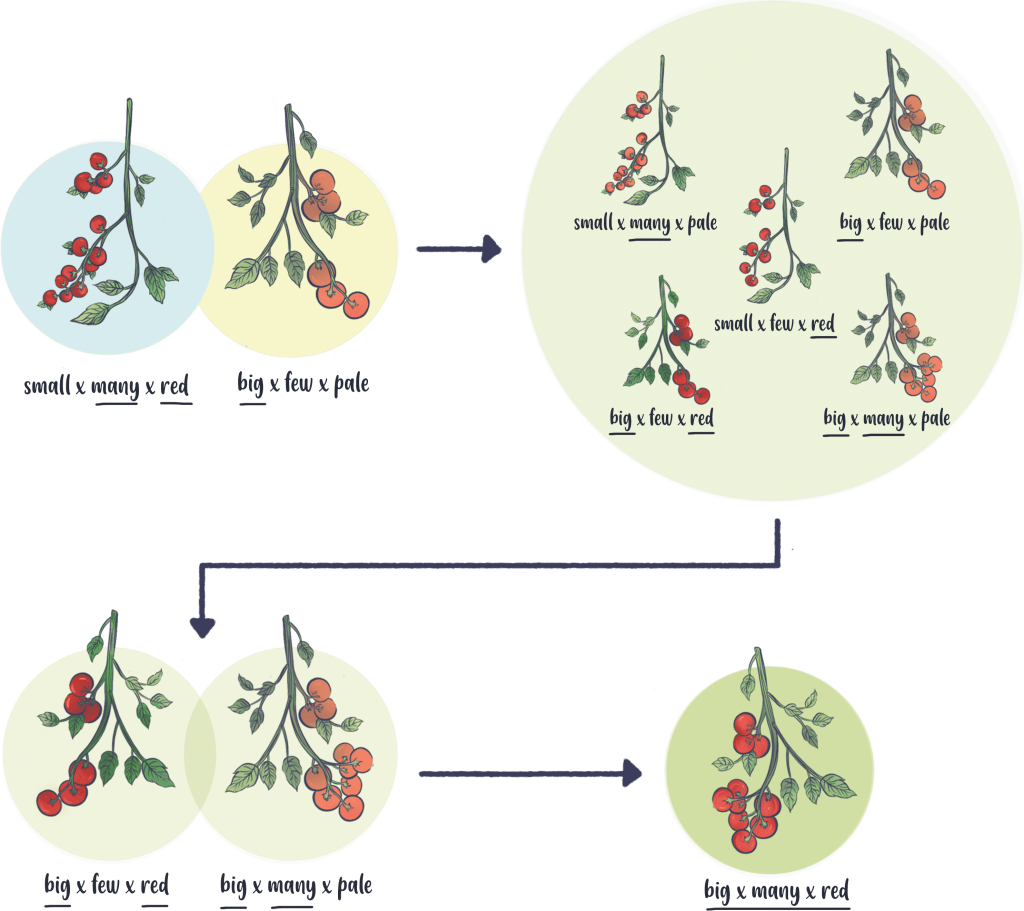
Selective breeding vs. CRISP
Gene editing lets us do something similar to selective breeding. We can use gene editing to make plants and animals with the specific gene variants we want. And we can use gene editing to get rid of the gene variants we don’t want. Gene editing has some advantages over selective breeding:
- It’s much quicker!
- You can add new traits, not just pick from natural variants.
Crops are plants we farm for food. Many crops and food animals have been selectively bred to make them:
- Easier to grow
- Grow faster and bigger
- Taste better
Scientists and farmers are pursuing gene editing to help feed the world. Read on to learn how they’re doing this!
Making plants and animals more nutritious
A nutritious diet is a key part of staying healthy! Gene editing can be used to grow plants and animals that are healthier to eat. Scientists are working on:
- Tomatoes with more lycopene, a nutrient that is healthy for your heart and skin
- Rice with lots of vitamin A, a nutrient that helps you see
- Boosting the amount of cancer-fighting compounds in broccoli
- Making wheat without gluten, a protein some people can’t digest
- Non-allergenic eggs and peanuts
- Pigs that have more lean muscle and less fat
- And more!
Keeping pests away
Plant pests are a major stress for farmers! Pests usually means insects that eat the leaves, fruits, or other parts of a plant. Some pests eat up the crops that farmers are growing for people. Others eat the roots or leaves of a plant, making the plant get sick or die. Have you ever found a pest in your food?
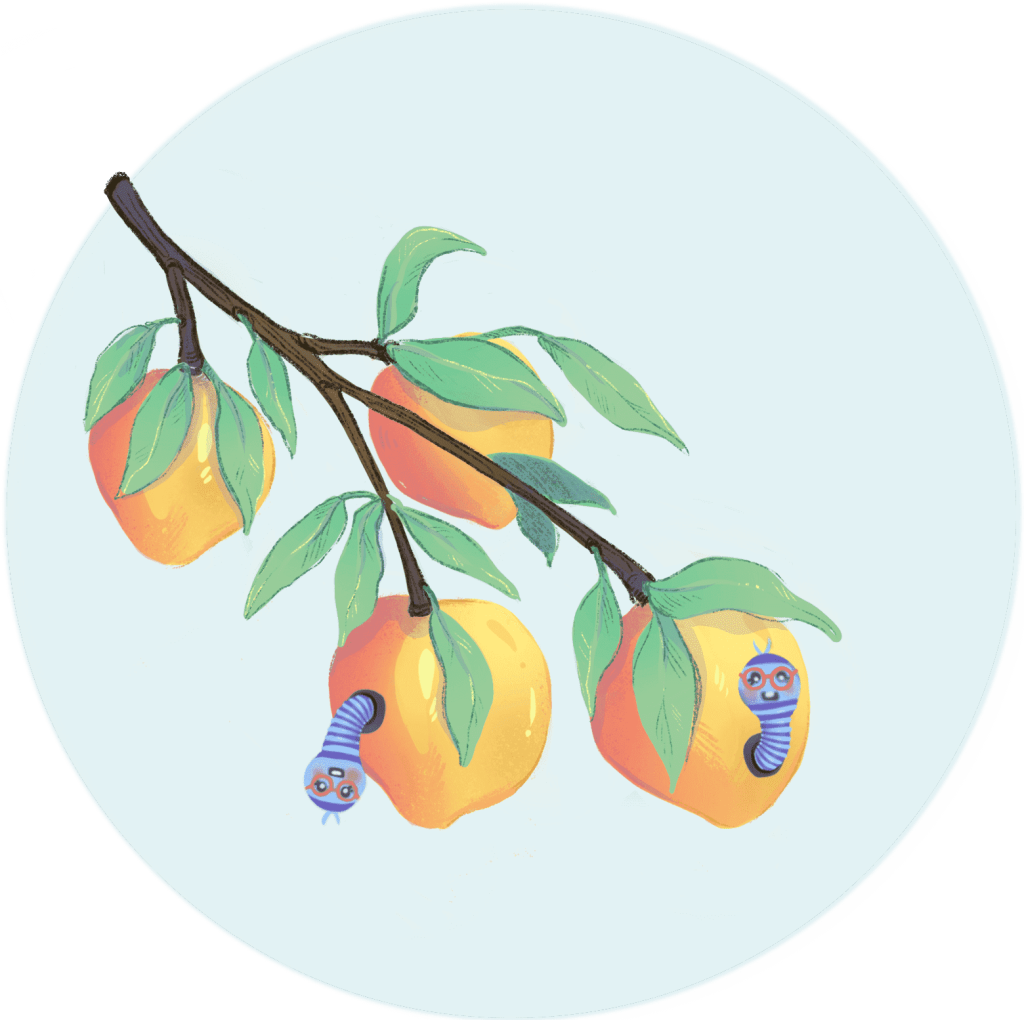
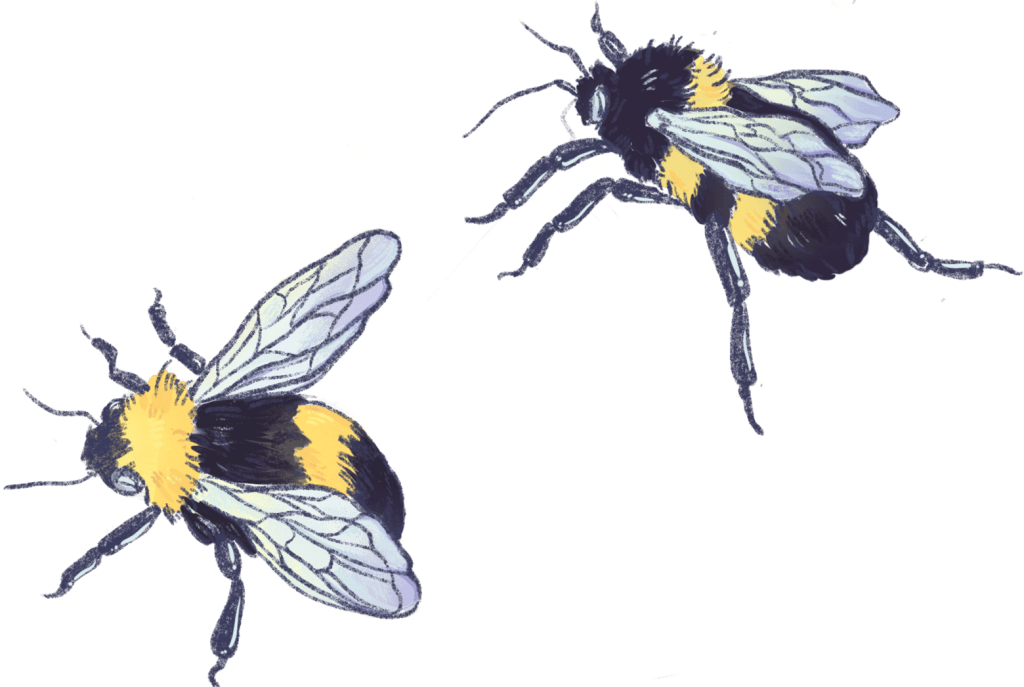
Most of the time, farmers spray plants with pesticides. Pesticides are chemicals that kill pests. Pesticides can do a good job of protecting plants from pests, but there are some big downsides. Sometimes pesticides are dangerous to farmers and farmworkers. Sometimes pesticides pollute water and soil. And sometimes pesticides hurt “good” insects, like bees!
Plants can also get sick from germs, just like we can. Sick plants make less food, and sometimes even die. Protecting plants from germs is another challenge for farmers.
Gene editing can be used to fight pests and germs! Scientists can put gene variants or new genes into plants to protect them. What traits do you think would help keep plants healthy?
How do you feed a big, hot, hungry world?
Everyone deserves healthy, delicious food. But how do we make sure everyone gets that food? Right now, there are big challenges — and big opportunities.
Two big challenges are population growth and climate change. Population growth means that the number of people on our planet is getting bigger. There are more people alive today than ever before. And they all need food!
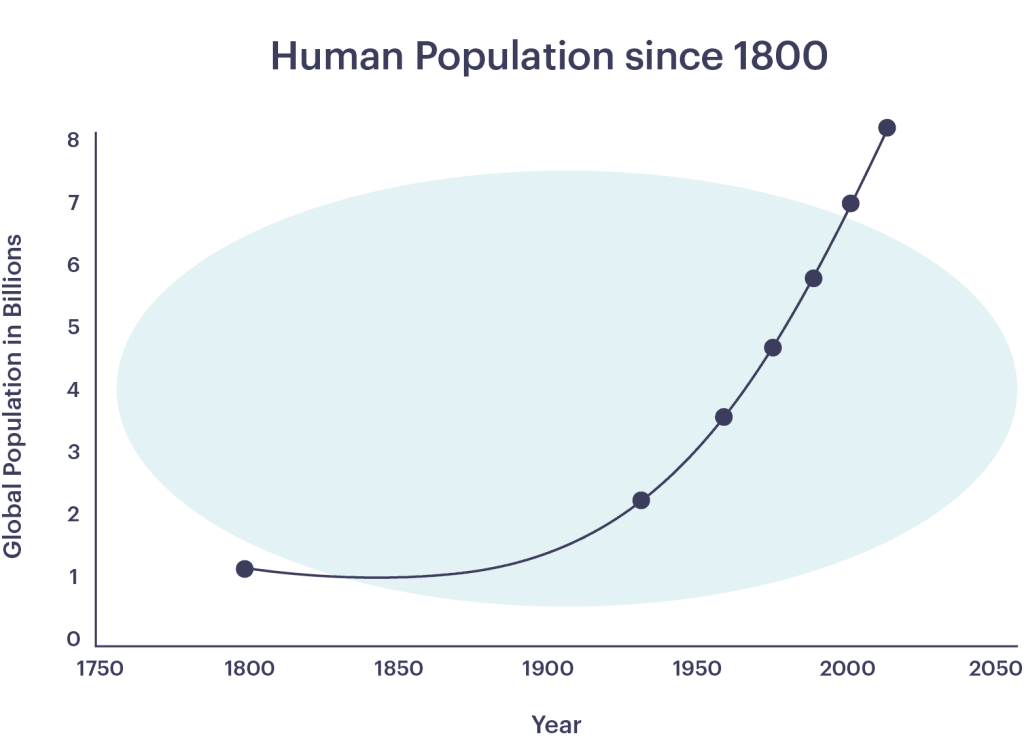
So, farmers need to grow more food. Gene editing could help scientists grow crops that:
- Grow faster
- Grow bigger
- Grow more edible parts (like more apples on each apple tree)
- Are more nutritious
- Need less water, fertilizer, or pesticides
Climate change means big changes in things like temperature, rain, wind, and storms. It doesn’t mean just one day of unusual weather, but that weather overall is changing. And it’s happening quickly! Climate change affects how plants and animals live and grow.
In many places, climate change means warmer weather. So, farmers need to grow plants and animals that are healthier in hotter conditions. Another effect is less rain in some places, and much more rain in others. Scientists are using gene editing to make:
- Rice that can survive floods
- Tomatoes that can survive droughts
- Cows, chickens, and turkeys that can tolerate heat
- And more!

Making sure edited plants and animals are healthy and safe to eat
Often, news headlines make it sound like scientific discoveries will instantly result in new items in the grocery store. In reality, it takes many years to get from new research to new products in farms and grocery stores.
When scientists have an idea for gene editing a plant or animal, they do lots of lab experiments to test it and make it better. Then, before a product can get to the grocery store, it’s important to make sure that it’s safe to eat. A few ways to do this include:
- Looking at the DNA sequence of a gene-edited plant or animal
- Looking at the nutrients in a gene-edited plant or animal
- Growing plants or animals on a small area of land to see if they harm the environment
Can you think of more ways to make sure a plant or animal is safe to eat?
Summary
Crops are plants we grow for food. Over thousands of years, humans have changed crops and food animals through a process called selective breeding. Selective breeding makes crops have more of the traits we want, and less of the traits we don’t want. CRISPR is a quick way to edit the genes of crops and animals to give them gene variants for the traits we want, and change gene variants to get rid of traits we don’t want. CRISPR gene editing might be used to defend against pests, or make crops or animals grow bigger, faster. Climate change is a threat to our food sources. Gene editing could help us make plants and animals that can withstand climate change.
Think about it!
- What new trait would you add to a banana?
- What new trait would you add to a chicken?
Try it at home
- Learn how corn as we know it was bred from teosinte. Google “teosinte” and “corn” and compare pictures.
- Do the tomato skin shield experiment
- Compare wild and supermarket strawberries. Is the size different? Do they look different? Do they taste different?
Illustration use and attribution
The illustrations for CRISPR Made Simple are licensed under a Creative Commons Attribution-NonCommercial-ShareAlike 4.0 International License, and can be used and adapted for non-commercial, educational purposes. ALL modifications and uses must follow the CC BY-NC-SA 4.0 license.
Writing & Creative Direction
Hope Henderson holds a B.A. in Biology from Brown University and a Ph.D. in Molecular & Cell Biology from the University of California, Berkeley. She joined the IGI in 2019 to work in science communication. In addition to serving as IGI’s main writer, she plans content strategy and manages IGI’s social media, illustration, and translation.
Illustrator

Philippa Steinberg
Philippa Steinberg grew up in Hamburg, Germany. She found her passion for drawing in her early teens and began to self-teach, inspired by an online art community. Now she is an undergraduate studying integrative biology at the University of California, Berkeley. Her goal is to make science more accessible through art.
